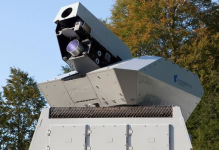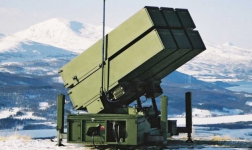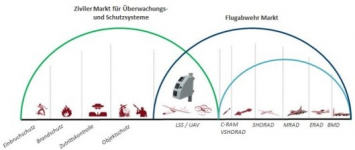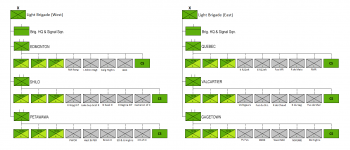In my view that Reserves are like Taxpayers. There is only one of them. In fact the Taxpayers and the Reserves are the same person. The Reserve offers his labour in exchange for taxes. She is a citizen that comes to the aid of the government. She doesn't belong to the Army. Or the Navy or the Air Force. Nor should she belong to the RCMP.
The purpose of a Reserve is to allow the Government to deal effectively with infrequent catastrophes.
And that is why I like the US National Guard and Danish Home Guard models.
These are citizens organized in military fashion, with military training and a military culture. Within those groups of citizens there are those that are predisposed to supply support and those that are predisposed to supply security. And there are those that are predisposed to fight with guns and tanks, fly jets and helicopters and sail boats. The government is offered an array of opportunities to exploit in a crisis. And one of those crises can be a war overseas that threatens domestic interests.
But those are not the only crises government faces. And government needs manpower for them all.
The Army is not the only draw on labour.
And an expeditionary army is not a particularly popular concept in Canada.
I would sooner have a body of willing citizens adapted to military culture that can be drawn on when the need for an expeditionary army is obvious to them.
Security is an easy sell. Fighting foreign wars is a hard sell.
Agreement.
No. It doesn't require the entirety of the Foresters 24/7. It may require a detachment on an ongoing basis to secure the gear.
As to the need for local Air Defence.
We're accustomed to thinking of guns targeting planes, or missiles targeting missiles. Now we are looking at targeting drones which we liken to military planes.
But on the civil side of things drones fall into the same category as birds. Nuisances. And nuisances are dealt with as quietly and unobtrusively as possible so as to not frighten the locals as they go about their affairs.
Rheinmetall is already promoting their air defence systems to civilian ports for managing all threats - from birds, drones and intruders to MIRVs.
The sensor and command and control packages are similar if not identical. The choice of effectors varies.
The basic system could include acoustics to startle, or directed energy systems (lasers, microwaves and RF) to fry silently.
Those systems would be entirely civilian controlled and maintained.
But suppose the threat moved up the spectrum to the "military" and there was a need for adding guns and missiles to the array of effectors?
Rheinmetall high level peace time effector
View attachment 73317
Rheinmetall low level war time effector.
View attachment 73318
And they would or could be augmented by NASAMS launchers
View attachment 73319
Once those effectors were deployed, and even while they were in storage in the armouries, they will need guarding.
On this we both agree. Or we should change government.
Also agreed. But how much protected mobility? Everybody armoured? Or a Brigade per Division? A Battalion? A Transport Company?
And my concern is engaging Canada's citizens so that they will respond to crises in both Owen Sound and the South China Sea when and as required.
I am not interested in keeping 4 CMBG happy in the Bierhalls. I am interested in raising Sam Hughes's CEF when necessary.







